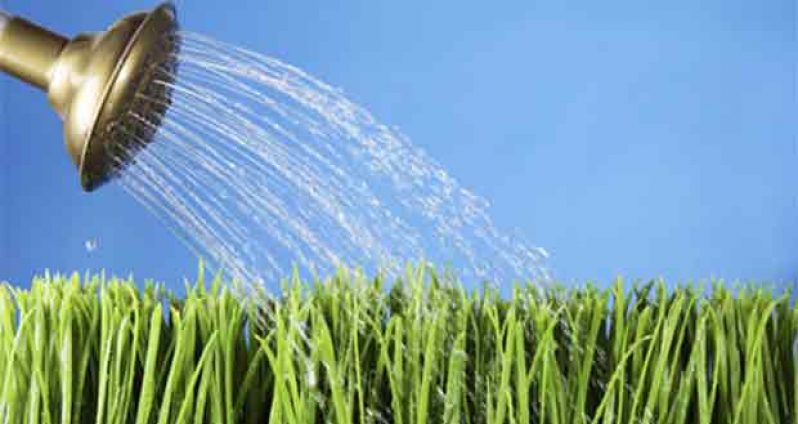Water is as vital for plants as it is for other organisms. The pressure of water within the plant cells helps the plant’s leaves to remain firm. Water also is essential for most of the plant’s biochemical reactions. In addition, water stores essential dissolved nutrients. How often plants need water depends on how hot, dry, and windy the climate is, how well the plant tolerates dry conditions, and how deep the roots go into the soil. Plants can be watered at any time of day. However, to avoid plant diseases that thrive in cool, moist conditions and to reduce water lost through evaporation, gardeners water in the early morning, when the air is cool and still, but the sun will soon dry the leaves.
Water the Soil, Not the Leaves It is a good idea to water the soil and not the leaves. The best method for watering plants is to apply the water directly to the soil, rather than over the tops of the plants. The water should be applied at a rate no faster than it can percolate into the soil so that the excess will not run off and be wasted. This technique reduces water lost through evaporation and keeps leaves dry, which discourages diseases. A few tools for watering the soil efficiently include hoses with tiny holes all along their surface, called soaker hoses; plastic tubes with tiny holes punched in them at intervals for drip irrigation; and plastic jugs with small holes punched in the bottom, filled with water, and set beside a plant. Watering large, densely planted areas, such as a lawn, requires a sprinkler. Evaporation of water from the soil can be minimized by covering the soil with a protective layer known as mulch.
Mulch acts as a barrier that slows evaporation by reducing the amount of air and heat that reaches the soil surface. Materials that can be used as mulch include leaves, bark chips, grass clippings, and cardboard.
Watering plants in containers:
Water in the Morning – Plants get their water from the soil via their roots. Plants’ roots are more receptive to watering in the morning and the evening and less so in the midday sun. It’s not a good idea (if you can prevent it) to water in the evening, because when you let water sit on the leaves overnight, some plants are likely to contract plant diseases, like mildew.
That said, if you get home from work and your plants are dry, even if it’s in the evening, give them a good long drink.
Water Deeply – The most important thing when watering plants in containers is to quench their thirst – optimally, until water runs out the hole in the bottom of your container. You do this because, depending on the size of your pot, many of the plant’s roots will be down towards the bottom and you want them to be able to get water too. It will also encourage roots to grow down toward the bottom of the pot, which is better for plants.
Note: Some of the above tips are from EVERGREEN NATURE STUDY CLUB: a non-profit organization geared to educate and re-educate persons on environmental literacy, coupled with nature tours. The Club offers nature-based goods and services, including technical advice.(See www.evergreenstudy.org)
( By Clifford Stanley)



.jpg)









